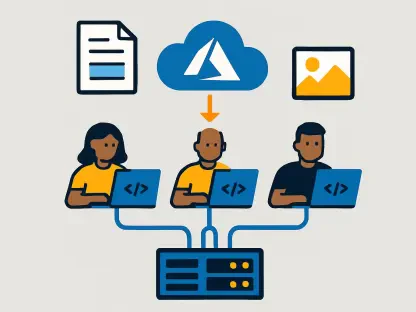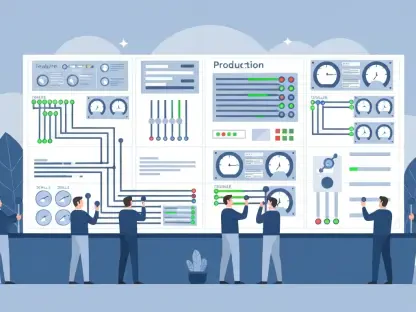Imagine a sprawling e-commerce platform handling millions of transactions during a peak holiday sale, only to crash unexpectedly due to unseen memory leaks in its Java microservices, highlighting the critical need for robust monitoring in cloud-native environments like Amazon EKS. Monitoring Java microservices is no longer a luxury but a necessity to ensure application reliability and scalability. This review delves into the state of monitoring solutions, focusing on tools like New Relic APM, their key features, real-world impact, and the evolving landscape of observability in Kubernetes-based architectures.
Introduction to Java Microservices Monitoring
Monitoring Java microservices in Kubernetes environments, such as Amazon EKS, is a multifaceted challenge that demands visibility at both infrastructure and application levels. At its core, observability involves tracking cluster metrics like pod health and resource usage while diving deep into Java Virtual Machine (JVM) internals, including heap memory and garbage collection (GC) behavior. This dual approach ensures a comprehensive understanding of system performance in dynamic, containerized setups.
The necessity of such monitoring stems from the complexity of cloud-native architectures where microservices operate in ephemeral, distributed environments. Without insights into JVM metrics alongside Kubernetes cluster data, identifying performance bottlenecks or preventing failures becomes nearly impossible. Robust monitoring practices are vital for maintaining scalability and reliability, enabling teams to respond swiftly to anomalies.
This discipline has become increasingly relevant as more organizations adopt microservices to achieve agility in development and deployment. By integrating advanced monitoring, businesses can mitigate risks associated with downtime and ensure seamless user experiences, especially in high-stakes scenarios like real-time transaction processing.
Key Components of Monitoring Solutions
Infrastructure-Level Monitoring with Kubernetes Metrics
Understanding the health of a Kubernetes cluster forms the bedrock of effective monitoring for Java microservices. Tools like Prometheus and kube-state-metrics play a pivotal role in capturing essential data about pods, nodes, and deployments. These metrics offer a window into resource utilization, helping teams gauge CPU and memory consumption across the infrastructure.
Such cluster-level insights are indispensable for maintaining system stability in environments like Amazon EKS. By tracking metrics related to node performance and pod lifecycle events, administrators can detect issues like resource contention or failing deployments before they escalate. This foundational layer of monitoring sets the stage for deeper application-specific analysis.
The integration of these tools often simplifies through mechanisms like Helm charts, allowing for streamlined deployment and configuration. As a result, DevOps teams can focus on interpreting data rather than wrestling with setup complexities, ensuring that infrastructure health remains a priority in managing containerized workloads.
Application-Level Monitoring with JVM Instrumentation
While infrastructure metrics provide a broad overview, true visibility into Java microservices requires delving into JVM internals. Solutions like New Relic’s Java agent excel in this area by capturing detailed metrics such as heap usage, GC pauses, and thread activity. These insights are critical for pinpointing performance issues that surface-level data cannot reveal.
JVM instrumentation helps uncover hidden problems like memory leaks or excessive garbage collection that could lead to crashes, such as OOMKilled errors in containers. By providing real-time data on application behavior, these agents empower developers to fine-tune configurations and prevent disruptions in production environments.
The significance of this level of observability cannot be overstated, especially for applications built on frameworks like Spring Boot, where internal JVM dynamics directly impact user experience. Armed with such detailed telemetry, teams can proactively address bottlenecks, ensuring that microservices operate smoothly under varying loads.
Recent Advancements in Monitoring Tools
The landscape of monitoring tools for Java microservices has evolved significantly, with platforms like New Relic leading the charge in unified observability. By integrating infrastructure and application performance management (APM), these solutions offer a holistic view of system health. This convergence eliminates silos between different monitoring layers, fostering better collaboration among teams.
Emerging trends further enhance the capabilities of these tools, including the use of Helm charts for seamless deployment in Kubernetes environments. Additionally, features like proactive alerting and customizable dashboards allow for tailored insights, enabling organizations to focus on metrics most relevant to their operations. Such innovations mark a shift toward more user-centric monitoring experiences.
Another noteworthy development is the emphasis on automation and intelligence in observability platforms. With growing adoption of automated alert configurations and pre-built visualization templates, monitoring tools are becoming more accessible to teams of varying expertise. This democratization of technology promises to accelerate issue resolution and optimize resource allocation in complex setups.
Real-World Applications and Use Cases
In industries like e-commerce, finance, and technology, Java microservices monitoring has proven transformative in maintaining operational excellence. For instance, large online retailers rely on tools like New Relic to monitor transaction latencies and JVM performance during high-traffic events, ensuring minimal downtime and preserving customer trust. These implementations underscore the practical value of robust observability.
Financial institutions also benefit from such monitoring by using it to safeguard critical applications handling sensitive transactions. By leveraging detailed JVM metrics, these organizations can reduce mean time to resolution (MTTR) for incidents, thereby minimizing financial losses. Unique use cases, such as forwarding GC logs to Amazon S3 for long-term analysis, further enhance debugging capabilities.
Technology firms, too, harness these solutions to support continuous deployment pipelines, ensuring that microservices remain reliable across development, staging, and production environments. The ability to correlate infrastructure and application data enables precise scaling decisions, aligning resources with demand spikes. Such real-world applications highlight the indispensable role of monitoring in cloud-native ecosystems.
Challenges and Limitations in Monitoring Java Microservices
Despite its benefits, monitoring Java microservices presents several technical hurdles that organizations must navigate. One prominent challenge lies in aligning JVM resource allocation with Kubernetes-imposed limits, as mismatches often result in errors like OOMKilled. This requires meticulous tuning and constant oversight to balance application needs with container constraints.
Another issue arises from the ephemeral nature of container logs, which complicates long-term analysis and troubleshooting. Missing metrics or incomplete data can obscure critical insights, delaying problem resolution. Addressing this often involves integrating durable storage solutions like Amazon S3 to preserve logs beyond pod lifecycles, though this adds operational overhead.
Efforts to overcome these limitations are underway, with improved tooling and best practices emerging to streamline monitoring workflows. Enhanced integrations and automated tuning recommendations aim to reduce manual intervention, while better log management strategies seek to ensure data availability. Nevertheless, these challenges remain a focal point for ongoing innovation in the field.
Future Directions in Java Microservices Monitoring
Looking ahead, the trajectory of Java microservices monitoring points toward deeper integration with modern DevOps practices. Enhanced distributed tracing capabilities are expected to provide end-to-end visibility across service boundaries, making it easier to pinpoint failures in complex architectures. Such advancements will likely redefine how teams approach debugging and optimization.
Another promising avenue is the incorporation of AI-driven anomaly detection, which could predict issues before they manifest as outages. Coupled with tighter integration into CI/CD pipelines, monitoring tools may evolve to offer real-time feedback during deployments, ensuring quality at every stage. This proactive stance could significantly bolster application resilience.
The long-term impact of these developments will likely extend beyond technical improvements, influencing business continuity in cloud environments. As monitoring solutions become more intuitive and predictive, organizations can expect reduced operational risks and improved scalability. This evolution signals a future where observability is not just reactive but a strategic asset for sustained growth.
Conclusion and Key Takeaways
Reflecting on this evaluation, it becomes clear that Java microservices monitoring, bolstered by tools like New Relic, has established a strong foundation for unifying infrastructure and application observability in Kubernetes environments. The technology has demonstrated its capacity to enhance reliability and performance, addressing critical needs in cloud-native architectures.
For teams looking to build on this foundation, a recommended next step is to explore distributed tracing to gain deeper insights across microservice interactions. Additionally, integrating alerts with collaboration platforms like Slack or PagerDuty has proven effective in ensuring timely incident responses. Custom dashboards also offer a way to tailor monitoring to specific operational goals.
As a final consideration, organizations are encouraged to stay abreast of AI-driven advancements in monitoring, which have shown potential to transform reactive troubleshooting into predictive maintenance. By adopting these strategies, businesses can further solidify their resilience, ensuring that Java microservices continue to support critical operations seamlessly in dynamic cloud landscapes.









